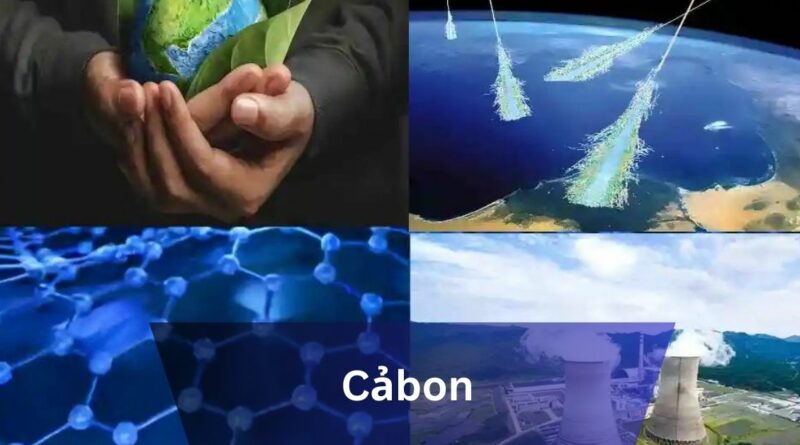Cảbon – The Elemental Keystone In 2024!
In the big picture of our world, there’s a tiny but super important stuff called cảbon. It’s like the building blocks of everything around us. From the sparkly diamonds to the pencils we use every day, cảbon comes in all sorts of forms, each with its own cool story.
But cảbon isn’t just some boring element; it’s like a superhero of the chemistry world! It can team up with other elements and make all kinds of amazing things happen. So, let’s embark on an exciting journey to uncover the secrets of cảbon, learn how it shapes our lives, and discover the incredible things it has in store for the future.
What Are Some Things Made Of Cảbon? – Another Word For “Cảbon” In English?
The applications of carbon are manifold. Diamonds, prized for their hardness and brilliance, adorn jewelry and serve in industrial applications. Graphite, with its slippery texture, finds utility in pencils and lubricants.

Carbon nanotubes revolutionize industries with their exceptional properties, while carbon fibers offer strength and lightweight advantages in aerospace and automotive sectors.
Additionally, carbon compounds like acetic acid and organic polymers permeate various aspects of daily life. Also, In English, “cảbon” translates to “carbon,” an element renowned for its adaptability and importance in numerous fields.
How Does Cảbon Help Plants Grow?
Carbon plays a pivotal role in the growth of plants through photosynthesis. During this process, plants absorb carbon dioxide from the atmosphere, utilizing it to produce glucose and oxygen. This glucose serves as an energy source for plant growth and sustenance, while oxygen is released back into the atmosphere, supporting life on Earth.
Read: Tips for Successful AFSL Application Completion and Submission
What Happens When We Burn Things With Cảbon In Them?
Burning carbon-containing substances, such as fossil fuels or biomass, initiates combustion, releasing carbon dioxide and other gases into the atmosphere. These emissions contribute to air pollution and the greenhouse effect, leading to climate change and environmental degradation.
What Can We Do To Stop Too Much Cảbon From Going Into The Air?
To mitigate carbon emissions, it’s essential to embrace sustainable practices such as transitioning to renewable energy sources, improving energy efficiency, promoting carbon capture and storage technologies, and supporting reforestation efforts to absorb excess carbon dioxide from the atmosphere.

Why Are Cảbon Diamonds Special?
Diamonds captivate with their unparalleled hardness, brilliance, and optical properties. Beyond their allure in jewelry, diamonds serve as cutting tools in industries, abrasives in manufacturing, and even in high-pressure experiments due to their resilience and durability.
Read: Acúmen
What’s Special About Cảbon Pencils?
Graphite, the form of carbon used in pencils, possesses a unique layered structure that allows it to glide smoothly on paper, leaving marks. This property makes graphite an ideal medium for writing and drawing, contributing to its widespread use in everyday life and creative endeavors.
How Are Scientists Using Cảbon To Make Things Better?
Scientists harness carbon’s versatility to develop innovative technologies and materials with transformative potential. Carbon nanotubes, for instance, offer remarkable mechanical, thermal, and electrical properties, revolutionizing industries ranging from electronics to medicine. Graphene, another carbon allotrope, exhibits extraordinary strength and conductivity, promising breakthroughs in various fields.
Read: Eviri
Why Is It Important For Businesses To Be Careful With Cảbon?
Businesses wield significant influence in carbon management, with their operations often contributing to substantial carbon emissions. By adopting sustainable practices, investing in green technologies, and transparently reporting their environmental impact, businesses can mitigate harm to the environment and contribute to global sustainability goals.

What Can Regular People Like Us Do To Help With Cảbon?
Individual actions can collectively make a substantial impact on carbon neutrality. Simple steps such as reducing energy consumption, supporting renewable energy initiatives, participating in carbon offset programs, and advocating for sustainable practices can empower individuals to contribute positively to the environment.
FAQs:
1. What are some emerging technologies related to carbon utilization?
Emerging technologies include carbon capture and storage methods, advancements in renewable energy sources such as solar and wind power, and the development of carbon-neutral fuels and materials.
2. How is carbon used in food production and technology?
Carbon is essential for plant growth and forms the basis of organic compounds found in food. In technology, carbon-based materials are utilized in electronics, batteries, medical devices, and various industrial applications.
3. Can you explain the concept of carbon footprint and its importance?
A carbon footprint measures the total amount of greenhouse gases emitted directly or indirectly by human activities. Understanding and reducing carbon footprints are crucial for mitigating climate change, preserving the environment, and promoting sustainability.
4. Some examples of sustainable technologies aimed at reducing carbon emissions?
Examples include renewable energy sources like solar and wind power, energy-efficient technologies, carbon capture and storage systems, sustainable transportation solutions, and green building practices.
5. How do businesses demonstrate corporate responsibility in managing carbon?
Businesses showcase corporate responsibility by measuring and reducing carbon emissions, investing in renewable energy, adopting sustainable practices in their operations, and engaging in transparent reporting of their environmental impact.
6. What are some future innovations expected in the use of carbon?
Future innovations may include advancements in carbon-based materials such as graphene and carbon nanotubes, breakthroughs in carbon capture and utilization technologies, and the development of sustainable agricultural practices to mitigate carbon emissions.
To Sum Up:
So in the end, cảbon embodies the essence of innovation, sustainability, and interconnectedness in our world. From its ancient origins to its modern-day applications, carbon continues to inspire awe and drive progress towards a greener, more resilient future. By embracing its potential and adopting sustainable practices, we can pave the way for a harmonious coexistence with nature, ensuring a brighter tomorrow for generations to come.
Read Also:
